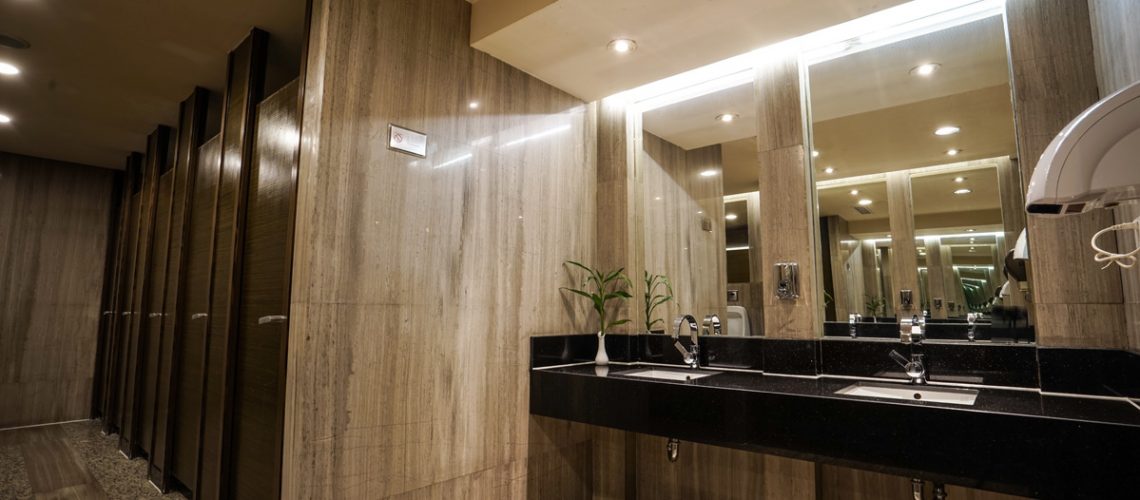Restroom etiquette is probably the least of companies’ concerns when they’re developing a good workplace culture. They tend to focus more on interdepartmental collaboration, communication, teamwork, and building trust. What they don’t realize is that employees’ restroom etiquette can affect those areas too, and vice-versa.
It seems absurd to think about; what does an employee’s restroom habits have to do with their bosses and colleagues? Actually, it turns out that 83% of U.S. workers believe that the state and cleanliness of their office restrooms indicate whether a company values their employees or not. Meaning, if your restroom is untidy, uncomfortable, or lacking enough fixtures or facilities, your employees may perceive your company as neglectful of basic human needs.
But companies don’t technically own their offices’ restrooms, do they? They’re leased along with the entire office space, hence they don’t have full control of the restrooms’ design. Still, if companies can renovate their spaces, they sure can upgrade their meager restrooms as well.
If a restroom lacks essential facilities or fixtures, its users will be forced to leave their mess on the floors or drains or to carry them around until they can find proper disposal, which isn’t the most sanitary option either. So to avoid incidents like those in your office, reexamine your customs, policies, and everything else related to your company culture.
OSHA’s Restroom Rules
The Occupational Safety and Health Administration (OSHA) has set regulations on the availability of restrooms and employees’ access to them. This aim to ensure that there are clean and safe toilet facilities for employees. This is so employees will not suffer the adverse health effects caused by unavailable toilets at a time of need.
Basically, the OSHA expects all employers to provide functional and easily accessible restrooms to their employees. In the case of mobile worksites, employers must provide transportation to nearby toilet facilities. Agricultural workers, meanwhile, should have toilet and hand-washing facilities within a quarter-mile of their worksite.
OSHA also issued a memorandum mandating employers to allow prompt bathroom access to their employees. As per the number of toilets required per restroom, the requirements vary. If a company has no more than 15 employees, they may provide only one unisex restroom, with a working door lock mechanism. The rest of the minimum toilet number requirements are:
- 16 to 35 employees: two toilets
- 36 to 55 employees: three toilets
- 56 to 80 employees: four toilets
- 81 to 110 employees: five toilets
- 111 to 150 employees: six toilets
- Over 150 employees: one additional toilet per 40 employees

All restrooms must be separated by gender for companies with more than 15 employees. In addition, each toilet should be in a cubicle. Companies may also provide a urinal, but it’s not covered in the minimum number of toilets set by OSHA. If a company has all-male staff, though, an office restroom can have multiple urinals as long as the number of toilets isn’t less than two-thirds of the number specified in the requirements.
Companies must also equip their restrooms with hand-washing facilities, which should have clean running water, soap, and hand towels, or hand-dryers.
Restroom Etiquette
There are also cases in which a company’s poor bathroom etiquette problem is due to the employees themselves. Since everyone had a different upbringing, employers can’t expect their employees to observe the same hygiene practices. Often, employees behave in the office the way they do at home. If they habitually dispose of their paper towels in the toilet, they’d do the same on their bathroom businesses in the office.
The disposing of objects in the toilet and drains result in serious clog issues. If your company faces the same issue, have a maintenance staff oversee the professional drain cleaning jobs in your office’s restroom. They’d likely discover shocking objects stuck into the drains, like food, disinfectant wipes, paper towels, cotton, and fruit skins.
And moving forward, set new policies regarding restroom etiquette. Send a memo to your employees, requiring them to practice good hygiene effective immediately. Enumerate the items that should never be put into drains. Remind them to flush the toilets every after use, preferably with the lid down to prevent the spread of germs. If someone is causing problems in the restroom, avoid calling them out publicly. Invite them into your office instead to discuss how they can behave better next time.
Most importantly, follow the legal requirements, and make sure that your restrooms are adequately stocked with hygiene products at all times. Assign a housekeeping staff for maintenance and sanitation, but have your employees responsible for their own hygiene. Instill in your company that they must be considerate of their colleagues every time they use the office restroom.

